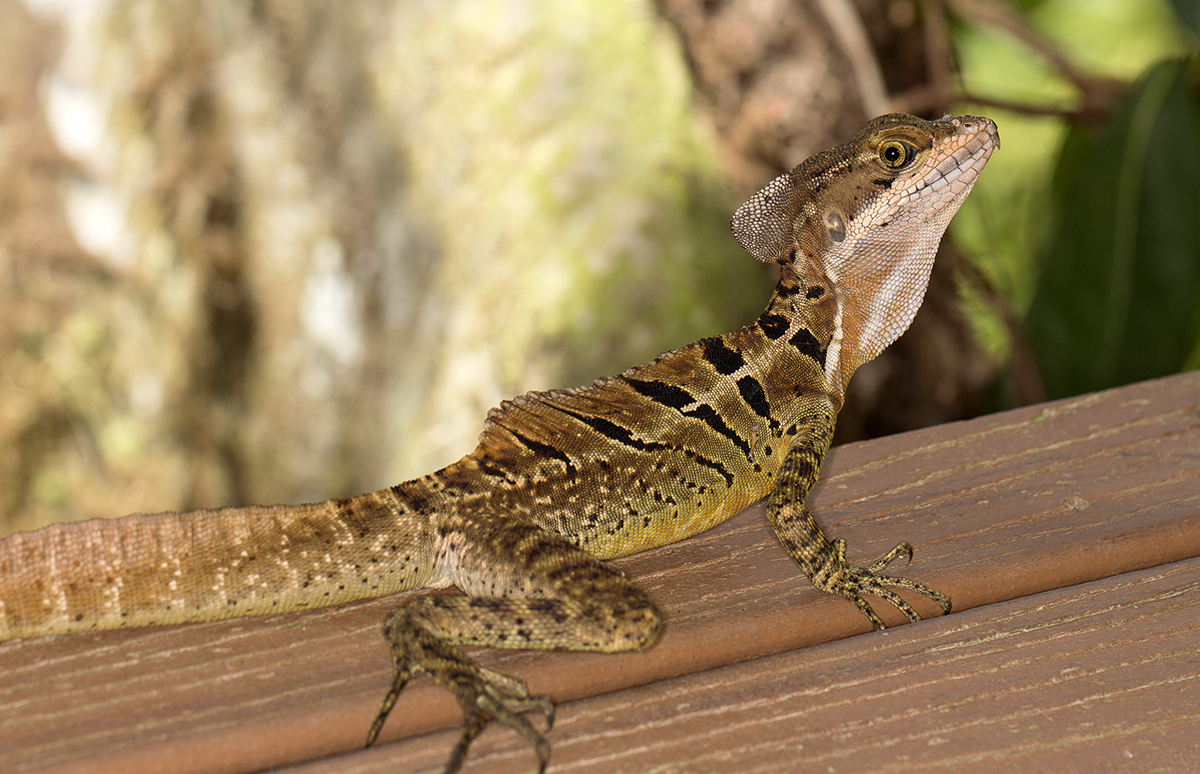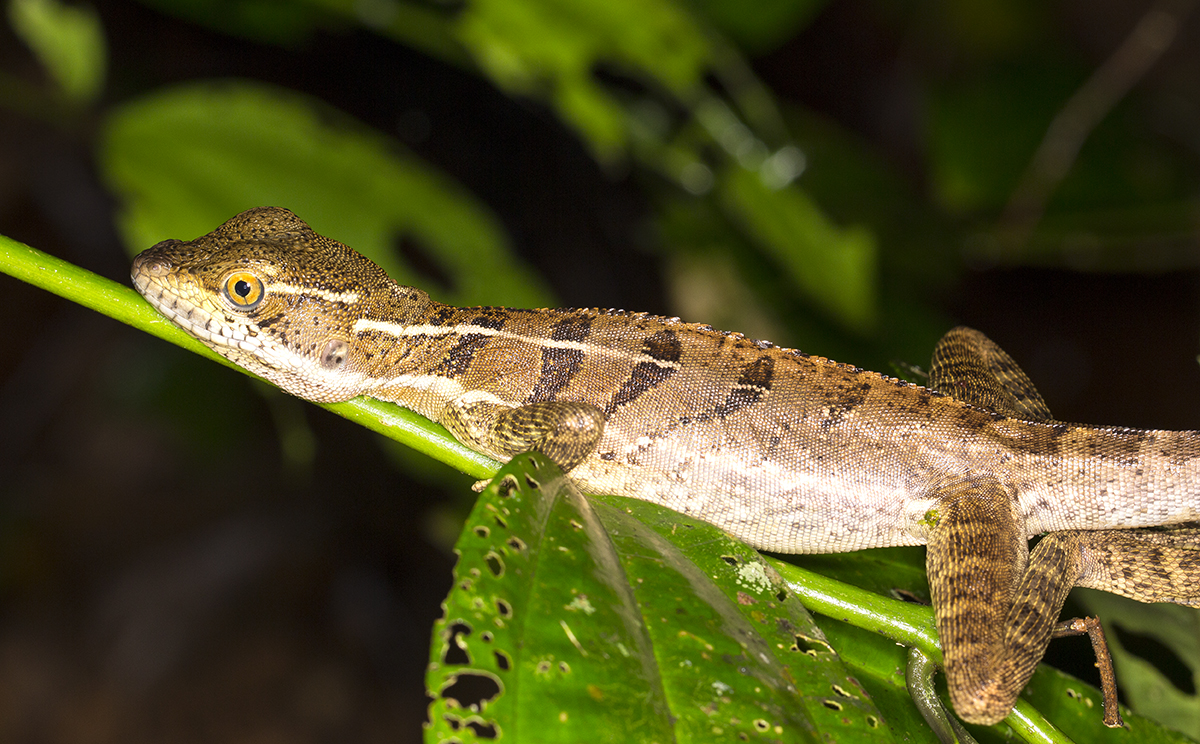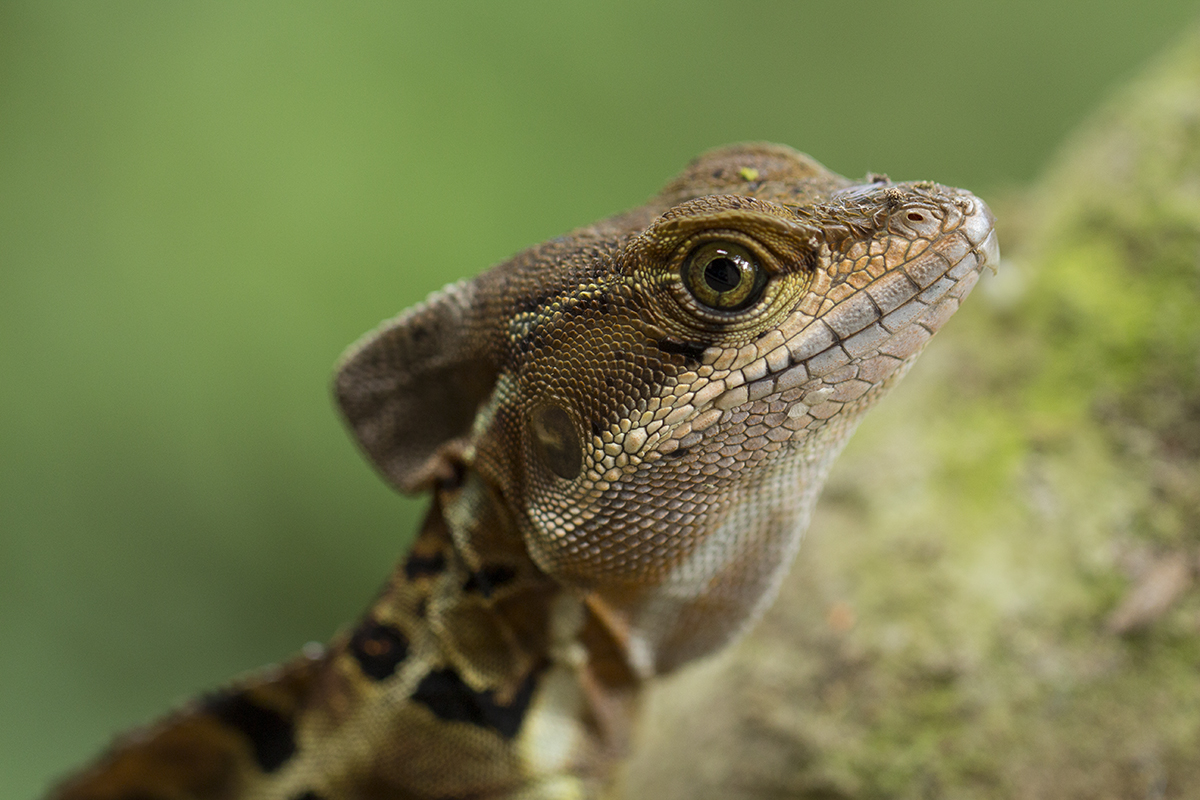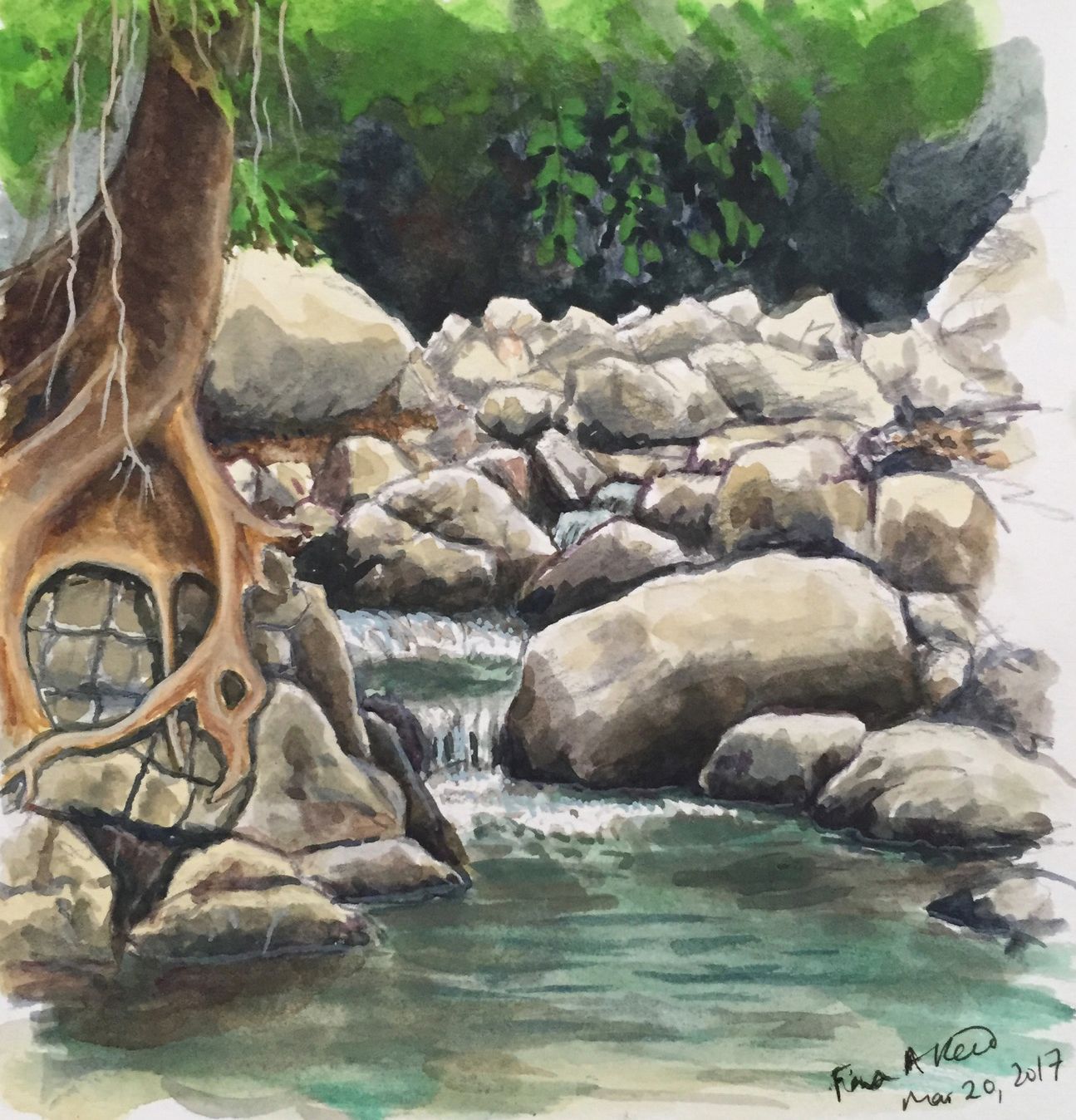
Young male basilisk in my lounge
In this blog I am going to introduce the Common Basilisk, Basiliscus basiliscus. It is also known as the Jesus Christ Lizard, due to its ability to run over the water surface – OK, it can’t walk on water but it can run on it, which is an impressive sight as the lizard rears up and races along bipedally, resembling a small Velociraptor. This ability is due to the very long toes on the hind feet that are equipped with flaps of skin which catch tiny air bubbles and increase the surface tension of the water thus keeping them afloat. Young basilisks can run 10-20 m over water, whereas adults will sink after a few meters.
These lizards swim very well, and so even if they sink they can continue to escape a terrestrial predator by swimming. They can remain underwater for up to 30 minutes, but they mostly stay on the riverbanks and use the water only as an escape route
Common Basilisks are very common along the river’s edge everywhere by the Finca. If you climb up to the waterfall you should see several of these animals looking at you from the rocky banks, or racing off to hide. If you are lucky you might see one dash across a river pool. These large and agile lizards feed mostly on insects and other invertebrates, but adults also eat fish, smaller lizards, birds and small mammals on occasion. They also eat fruit and flowers.

Juvenile Basilisk with no crest
Male basilisks have a size-based dominance hierarchy, and larger males inhibit breeding by younger males, which are reproductively mature by age 2 but usually do not breed until 3-4 years of age. Females are mature at just under 2 years of age. Females dig a hole and lay clutches of 2-18 eggs. Several clutches are laid during on year, in the wetter months. After digging the hole and depositing the eggs, the female fill the hole with soil, packing it down with her snout. There ends her parental care.

Sleeping adult male basilisk
Young basilisks and females have a small crest on the head; very young animals lack crests. Adult males have large crests on the head, trunk and tail. Common Basilisks are quite variable in color. Males usually have a white stripe from eye to tail and a second stripe from nostril to shoulder. They all have transverse dark bands on a brownish background. Basilisks are active by day and sleep at night. They usually climb up trees or branches to sleep. I have read that they do not climb during the day, but the Finca basilisks beg to differ. I have had several different individuals climb up the tree to my house and lounge on my deck, a good 10 m up, in the afternoon. My lounge lizards venture quite far from water and make themselves at home in the trees during the day and at night.
One afternoon we were sitting on the couch in the open living room of El Fenix and my son Ian pointed at the tree, but before he could say anything a large basilisk leapt onto his shoulder! It was gone in a flash, over the side and onto another tree nearby.
If you would like to see this lizard, check around the Cabina del Rio and the piles of leaves near the edge of the water at base camp. Take a trip to the waterfall and move quietly along the river bank. If you are staying in my treehouse, El Fenix, you may be lucky enough to have one come and lounge on the upper or lower deck. At night you can see small basilisks sleeping along the Red Trail, quite far from the water. I found the biggest basilisk I have seen asleep on a vertical trunk by the river. It was across a raging torrent so I didn’t get very good close up pictures, but you can at least see the crest on this fine male. If you are lucky enough to see an Emerald Basilisk at the Finca, please notify the staff. I haven’t seen one yet but they should occur here.

Young male basilisk
One of the things I cherish on my visits to Finca Bellavista is my daily walk to the river, and a scramble up to the waterfall. Small basilisks gaze from rocks, and there is a wonderful sense of unspoiled wilderness. There is no plastic in or near the water. No trash. No paths, no signs, no sounds of machinery or cars, just the thunder of water. Perfect nature is a canopy of forest trees, clear water, and the creatures that make their home here. When I see a pile of rocks, an inukshuk/inuksuk as we call them in Canada, I knock it down. For two reasons: First, there are creatures that live under rocks, tiny little animals that have a territory and home range around that one rock. Move any rock and you may be unwittingly making a host of life forms homeless
(see https://www.theguardian.com/commentisfree/2018/aug/17/stone-stacking-instagram-environment-adventure-tourism for more science on why rock piles are environmentally damaging).
But more important, you have a chance to walk a short distance and actually be immersed in wildness. Where else can you go and see not a trace of human influence? The basilisks epitomize the wilderness of our wonderful river. Let’s do what we can to protect their home and keep it as pure and free as we can.

Text and illustrations copyright Fiona A. Reid

Fiona Reid owns El Fenix treehouse at FBV. She is a biologist and artist who has written and illustrated numerous books on mammals, including the Peterson Guide to Mammals of North America and A Field Guide to the Mammals of Central America and Southeast Mexico. She studies bats and other small mammals, but she also enjoys all aspects of tropical nature. Fiona decorated her treehouse with a mural of her forest view, and the first animal to be depicted on the mural was the Granular Poison Dart Frog.
